Office Layout
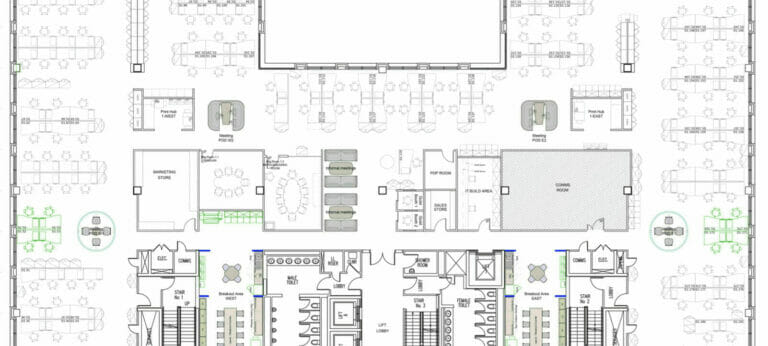
What Office Layout? A Quick Guide to the Pros and Cons of Office Layout Types
There is no such thing as a best layout type – it all comes down to how your business works, your people and the environment. It’s also about more that efficiency – it’s about business needs, productivity and employee morale.
Office planning is far more than fitting a certain number of desks into an office space. Branding, atmosphere, communication and confidentiality needs should all be important factors – before even beginning to think about aesthetics and practicalities such as tea points.
Open space
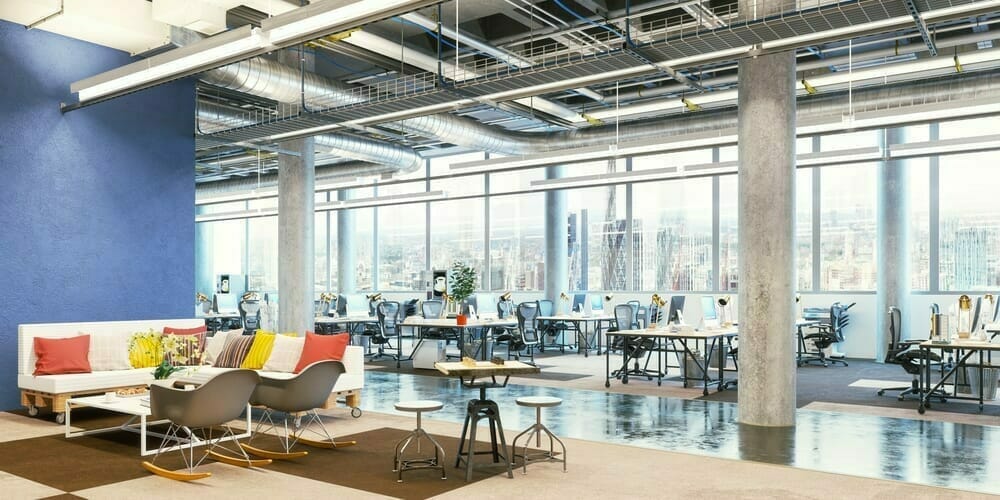
Open plan is a very popular choice, with desks in rows or clusters in a large open room with a lack of partitioning.
Best for: Tech companies, start-ups and organisations without extensive hierarchies.
Pros: No barriers limiting communication – faster decision making and increased efficiency. Cost effective due to limited partitioning works required. Can be better for maximising natural light, reducing artificial lighting needs.
Cons: Lack of meeting rooms or private pods if required, noise, distractions and lack of privacy. Can be mitigated by effective work mapping to determine optimum meeting room requirements.
Individual Rooms

Best for: Disciplines with confidentiality requirements and individuals holding frequent small meetings such as solicitors and accountants.
Pros: Ability to personalise space, privacy, reduced noise and increased ability to concentrate.
Cons: Isolation advantages can be offset by lack of collaboration and mixing with colleagues. Can be mitigated by break-out areas designed to encourage socialisation.
Cubicles
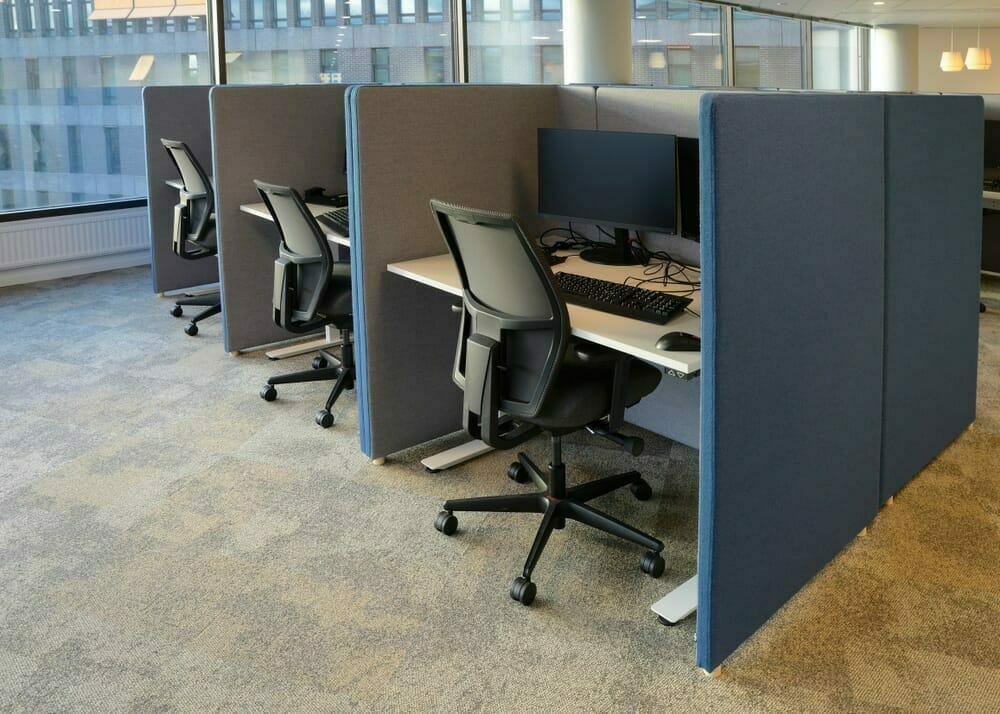
Compartments provide a middle ground between open plan office design and individual offices by the adoption of cubicles.
Best for: Larger companies with privacy requirements such as financial institutions
Pros: A great compromise that allows interaction and open communication with a degree of privacy and ability to focus.
Cons: Can result in narrow walkways and noise and harder to look more stylish. Can be mitigated by ensuring clusters of cubicles are separated to break up the ‘cubicle’ look.
Team Clusters
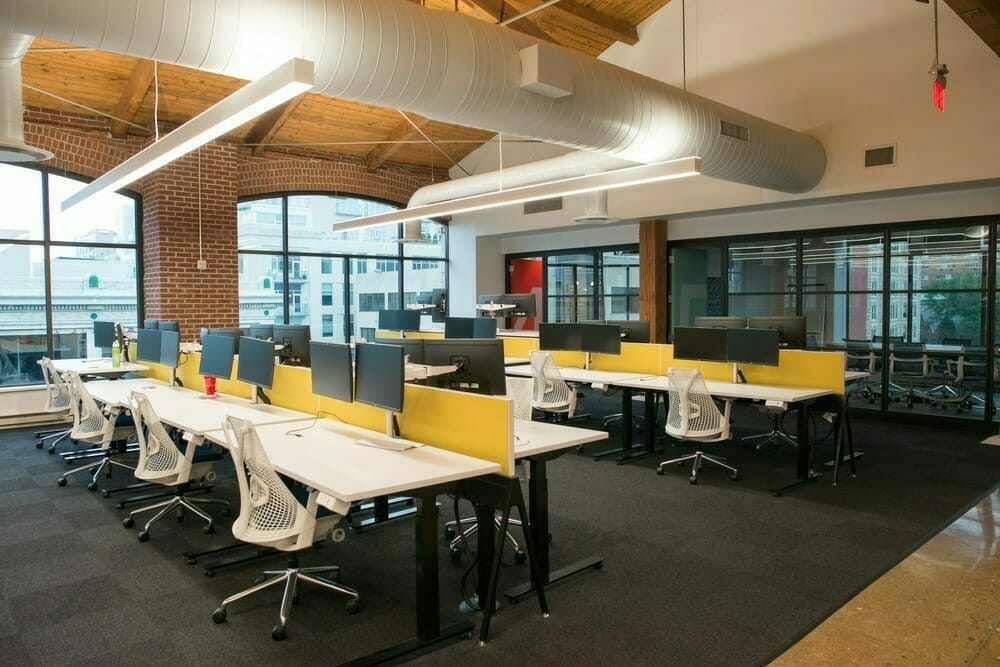
Banks of desks with low screens is another option to encourage collaboration while offering a lower noise option than true open plan.
Best for: Companies working in teams or with a high degree of internal role interactions.
Pros: Effective communications and efficient for frequent interations.
Cons: Can get noisy. Mitigate with sufficient meeting rooms and acoustic solutions.
Co-working space
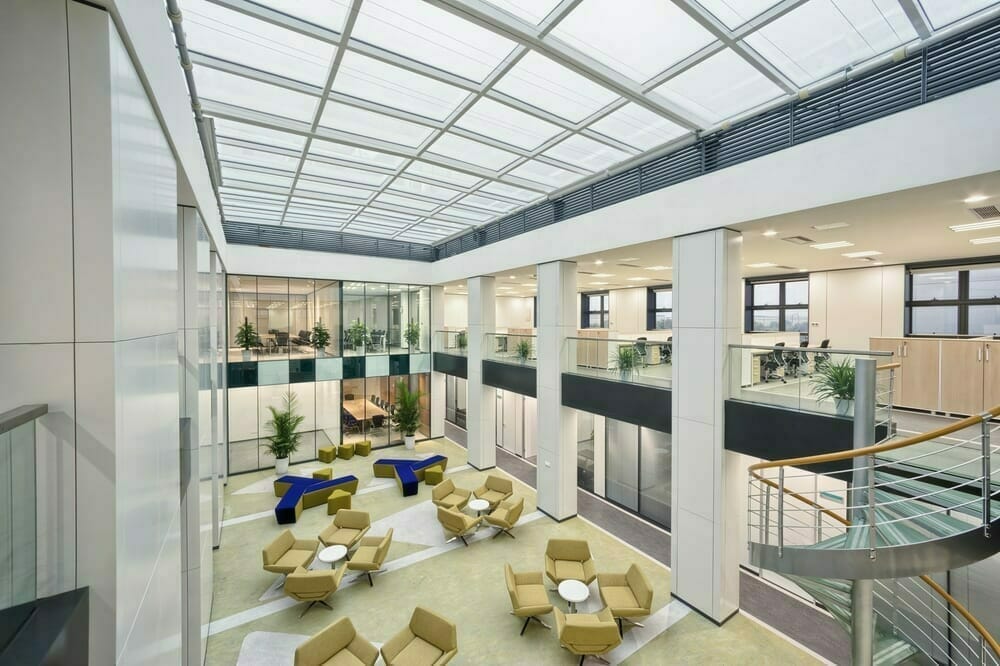
Serviced offices are a great solution for some individuals and smaller organisations where furniture, printers and even tea and coffee (and much more) are provided.
Best for: Individuals, start-ups and small companies looking for flexibility and none of the office management cost or time requirements.
Advantages: Great facilities without the effort, flexibility and networking opportunities.
Cons: Less easy to create own atmosphere. Mitigate by accessorising and maximising décor options.